 W
WMilitary technology is the application of technology for use in warfare. It comprises the kinds of technology that are distinctly military in nature and not civilian in application, usually because they lack useful or legal civilian applications, or are dangerous to use without appropriate military training.
 W
WAdaptiv is an active camouflage technology developed by BAE Systems AB to protect military vehicles from detection by far infrared night vision devices, providing infrared stealth. It consists of an array of hexagonal Peltier plates which can be rapidly heated and cooled to form any desired image, such as of the natural background or of a non-target object. Its goal is to develop Stealth ground vehicles.
 W
WThe Advanced Inertial Reference Sphere (AIRS) is a highly accurate inertial guidance system designed for use in the LGM-118A Peacekeeper ICBM which was intended for precision nuclear strikes against Soviet missile silos.
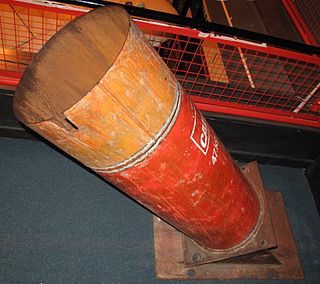 W
WBarrack buster is the colloquial name given to several mortars, developed in the 1990s by the engineering group of the Provisional Irish Republican Army (IRA).
 W
WThe BCT Common controller (CC) serves as a controller for many different BCT unmanned systems.
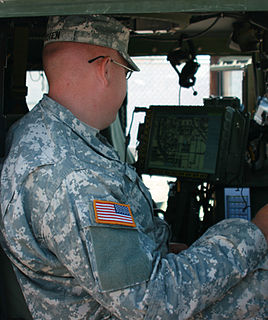 W
WThe Army will continue the development and fielding of an incremental ground tactical network capability to all Army brigade combat teams. This network is a layered system of interconnected computers and software, radios, and sensors within the Brigade Combat Team (BCT). The BCT network is essential to enable Unified Battle Command and will be delivered to the Army's Brigade Combat Teams in increasing capability increments. The first increment is currently finishing SDD developmental and operational testing and will be delivered to Infantry Brigade Combat Teams in the form of Network Integration Kits (B-kits) with E-IBCT.
 W
WBis-oxadiazole, or more formally known as bis(1,2,4-oxadiazole)bis(methylene) dinitrate, is a nitrated heterocyclic compound of the oxadiazole family.
 W
WBlue Force Gear, Inc. is a United States manufacturer of body armor, Modular Lightweight Load-carrying Equipment (MOLLE) gear, firearm slings, and other tactical equipment that was established in Pooler, Georgia during January 2004. They design and manufacture equipment for law enforcement, U.S. Armed Forces, and Sport Shooters. Select equipment manufactured contains a National Stock Number (NSN) and a National Item Identification Number (NIIN) for supplying armed forces. Its name, Blue Force Gear, is derived from military symbology dating back to World War I: blue being for Allied forces and red for enemy forces.
 W
WCaseless ammunition is a type of small arms ammunition that eliminates the cartridge case that typically holds the primer, propellant, and projectile together as a unit.
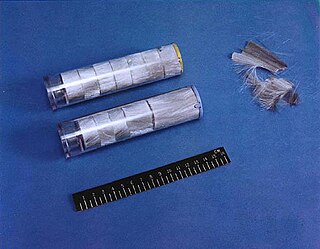 W
WChaff, originally called Window by the British and Düppel by the Second World War era German Luftwaffe, is a radar countermeasure in which aircraft or other targets spread a cloud of small, thin pieces of aluminium, metallized glass fibre or plastic, which either appears as a cluster of primary targets on radar screens or swamps the screen with multiple returns.
 W
WCounter-IED equipment are created primarily for military and law enforcement. They are used for standoff detection of explosives and explosive precursor components and defeating the Improvised Explosive Devices (IEDs) devices themselves as part of a broader counter-terrorism, counter-insurgency, or law enforcement effort.
 W
WThe Countermine System (CMS), also known as Venom Darts, Venom Penetrators and GBU-61, is an anti-land-mine system consisting of chemical or explosive projectiles released from modified GPS-guided bombs. The darts are used to detonate or deactivate land mines in beach and surf zones. The system was developed by the United States (U.S.) Navy and Boeing at an initial cost of US$153-million. The CMS is expected to be field ready by 2016.
 W
WThe depression range finder (DRF) was a fire control device used to observe the target's range and bearing to calculate firing solutions when gun laying in coastal artillery. It was the main component of a vertical base rangefinding system. It was necessitated by the introduction of rifled artillery from the mid-19th century onwards, which had much greater ranges than the old smoothbore weapons and were consequently more difficult to aim accurately. The DRF was invented by Captain H.S.S. Watkin of the Royal Artillery in the 1870s and was adopted in 1881. It could provide both range and bearing information on a target. The device's inventor also developed a family of similar devices, among them the position finder, which used two telescopes as a horizontal base rangefinding system, around the same time; some of these were called electric position finders. Some position finders retained a depression range finding capability; some of these were called depression position finders. Watkin's family of devices were deployed in position finding cells, a type of fire control tower, often in configurations that allowed both horizontal base and vertical base rangefinding. Watkin's system included automatic electrical updating of range and bearing dials near the guns as the position finders were manipulated, and a system of remotely firing the guns electrically from the position finding cell. The improved system was trialled in 1885 and widely deployed in the 1890s. Functionally equivalent devices were developed for the United States Army Coast Artillery Corps and its predecessors, called depression position finders or azimuth instruments depending on function, adopted in 1896 and deployed widely beginning in the early 1900s as the Endicott program of modern coastal defences was built. These devices were also used by both countries to control submarine (underwater) minefields.
 W
WDiffused lighting camouflage was a form of active camouflage using counter-illumination to enable a ship to match its background, the night sky, that was tested by the Royal Canadian Navy on corvettes during World War II. The principle was discovered by a Canadian professor, Edmund Godfrey Burr, in 1940. It attracted interest because it could help to hide ships from submarines in the Battle of the Atlantic, and the research project began early in 1941. The Royal Navy and the US Navy carried out further equipment development and trials between 1941 and 1943.
 W
WIn military telecommunications, the terms electronic support (ES) or electronic support measures (ESM) describe the division of electronic warfare involving actions taken under direct control of an operational commander to detect, intercept, identify, locate, record, and/or analyze sources of radiated electromagnetic energy for the purposes of immediate threat recognition or longer-term operational planning. Thus, electronic support provides a source of information required for decisions involving electronic protection (EP), electronic attack (EA), avoidance, targeting, and other tactical employment of forces. Electronic support data can be used to produce signals intelligence (SIGINT), communications intelligence (COMINT) and electronics intelligence (ELINT).
 W
WA field mill, also known as a camp mill, was a premodern vehicle which acted as a mobile mill used for grinding grains, which had the very practical use of feeding a moving army.
 W
WFirepower is the military capability to direct force at an enemy. Firepower involves the whole range of potential weapons. The concept is generally taught as one of the three key principles of modern warfare wherein the enemy forces are destroyed or have their will to fight negated by sufficient and preferably overwhelming use of force as a result of combat operations.
 W
WThe Ops-Core Future Assault Shell Technology (FAST) Helmet, also known as the FAST helmet, is a combat helmet used by special operations forces and law enforcement organizations.
 W
WThe Future Tactical Truck System (FTTS) was a United States Armed Forces program for which the Operational Requirements Document was drawn up during 2003. FTTS was a proposed two vehicle modular family that was to replace the AM General High Mobility Multipurpose Wheeled Vehicle, Family of Medium Tactical Vehicles (FMTV), Oshkosh M977 Heavy Expanded Mobility Tactical Truck (HEMTT), Oshkosh Palletized Load System (PLS), and all remaining M35, M809 and M939 series of 2.5 and 5 ton trucks. The FTTS-UV was to replace the HMMWV, while the FTTS-MSV was to replace all other types.
 W
WThe Ground Combat Infantry Fighting Vehicle was an infantry fighting vehicle being developed for the U.S. Army. The program originated as the lead vehicle of the U.S. Army's Ground Combat Vehicle program coordinated by TACOM and spawned a parallel program coordinated by DARPA. The purpose of the program was to replace existing armored personnel carriers and infantry fighting vehicles in U.S. Army service. The DARPA project aimed to have the vehicle designed by 2015. Derivatives of the vehicle based on a common chassis—such as tanks and ambulances—were expected to be manufactured. It replaced the previous attempt at a next-generation infantry transport, the XM1206 Infantry Carrier Vehicle. The Ground Combat Vehicle program was cancelled in February 2014.
 W
WThe Ground Combat Vehicle (GCV) was the United States Army's replacement program for armored fighting vehicles in Armored and Stryker brigade combat teams. The GCV was organized under the Follow On Incremental Capabilities Package of the BCT Modernization program. The first variant of the vehicle was to be prototyped in 2015 and fielded by 2017. It replaced the canceled Future Combat Systems, manned ground vehicles program. The Ground Combat Vehicle program was cancelled in February 2014. Its replacement was Next generation combat vehicle.
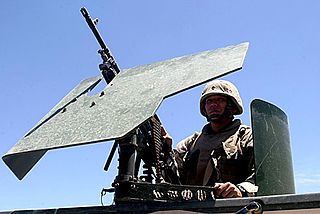 W
WA gun shield is a flat piece of armor designed to be mounted on a crew-served weapon such as a machine gun or artillery piece, or, more rarely, to be used with an assault rifle.
 W
WDeveloped by Northrop Grumman, the Integrated Meteorological System is the meteorological component of the Intelligence and Electronic Warfare (IEW) an element of the Army Battle Command System (ABCS). IMETS provides Army commanders at all echelons with an automated weather system to receive, process, and disseminate weather observations, forecasts, and weather and environmental effects decision aids to all Battlefield Operating Systems (BOS). IMETS is a mobile, tactical, automated weather data receiving, processing and dissemination system. The IMETS is an Army-furnished and maintained system operated by US Air Force battlefield weather team personnel. It uses US Air Force and Army developed software to provide a total weather system to support the Army. The Integrated Weather Effects Decision Aid (IWEDA) software, originally developed by the U.S. Army Research Laboratory (ARL) in 1992, has been fielded on IMETS since 1997 to provide tactical weather support to the U.S. Army.
 W
WThe Interspiro DCSC is a semi-closed circuit nitrox rebreather manufactured by Interspiro of Sweden for military applications. Interspiro was formerly a division of AGA and has been manufacturing self-contained breathing apparatus for diving, firefighting and rescue applications since the 1950s.
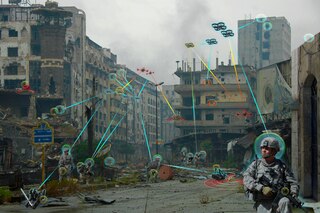 W
WThe Internet of Battlefield Things Collaborative Research Alliance (IoBT-CRA), also known as the Internet of Battlefield Things Research on Evolving Intelligent Goal-driven Networks, is a collaborative research alliance between government, industry, and university researchers for the purposes of developing a fundamental understanding of a dynamic, goal-driven Internet of Military Things (IoMT) known as the Internet of Battlefield Things (IoBT). It was first established by the U.S. Army Research Laboratory (ARL) to investigate the use of machine intelligence and smart technology on the battlefield as well as strengthen the collaboration between autonomous agents and human soldiers in combat. An initial grant of $25 million was provided by ARL in October 2017 to fund the first five years of this potential 10-year research program.
 W
WKrakatoa is a modular explosive device used for explosive ordnance disposal (EOD) or demolitions developed by the British company Alford Technologies. The device is designed to fire a number of different projectiles, operates both in air and underwater, and can be used in a vertical or horizontal orientation.
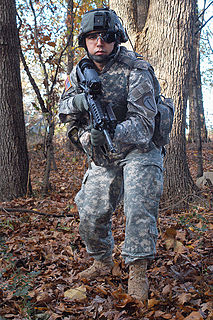 W
WLand Warrior was a United States Army program, cancelled in 2007 but restarted in 2008, that used a combination of commercial, off-the-shelf technology (COTS) and current-issue military gear and equipment designed to:integrate small arms with high-tech equipment; provide communications and command and control at the infantry soldier level; look at the individual infantry soldier as a complete unit rather than as a segment of a larger force.
 W
WA loitering munition is a weapon system category in which the munition loiters around the target area for some time, searches for targets, and attacks once a target is located. Loitering munitions enable faster reaction times against concealed or hidden targets that emerge for short periods without placing high-value platforms close to the target area, and also allow more selective targeting as the actual attack mission can be aborted.
 W
WThe Military Technical Courier is a multidisciplinary peer-reviewed scientific journal published quarterly by the University of Defence in Belgrade. It is a military science focused journal covering a wide range of scientific, professional and technical topics. Its articles are dedicated to fundamental and applied science and R&D applicable in military science, as well as to practical technical achievements in the field. The owners of the journal are the Ministry of Defence and the Serbian Armed Forces.
 W
WMobile offshore base (MOB), sometimes called a joint mobile offshore base (JMOB), is a concept for supporting military operations beyond the home shores, where conventional land bases are not available, by deploying on the high seas or in coastal waters, in-theater multipurpose floating base assembled from individual platforms. In essence, a MOB is a multipurpose modular self-propelled floating platform, or several interconnected platforms, that can perform multiple functions of a sea base including strike, deployment and logistics. An ocean-wise semi-submersible wave and wind resistant platform capable of moving at one-half the speed of conventional prepositioning monohull cargo ship has been researched and proposed, but never built.
 W
WMulti Ammunition Softkill System (MASS) is a naval self-defence system produced by Rheinmetall of Germany. It is connected to the ship's sensors and protects ships from attacks by advanced sensor-guided missiles by launching decoys that operate in all relevant wavelengths of the electromagnetic spectrum: ultraviolet, electro-optical, laser, infrared and radar. MASS can be either plugged into the command and control module of a naval vessel, or operate autonomously.
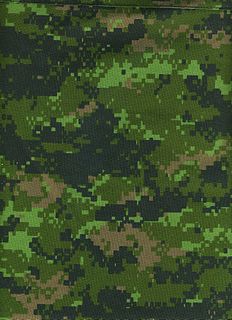 W
WMulti-scale camouflage is a type of military camouflage combining patterns at two or more scales, often with a digital camouflage pattern created with computer assistance. The function is to provide camouflage over a range of distances, or equivalently over a range of scales, in the manner of fractals, so some approaches are called fractal camouflage. Not all multiscale patterns are composed of rectangular pixels, even if they were designed using a computer. Further, not all pixellated patterns work at different scales, so being pixellated or digital does not of itself guarantee improved performance.
 W
WMulti-spectral camouflage is the use of counter-surveillance techniques to conceal objects from detection across several parts of the electromagnetic spectrum at the same time. While traditional military camouflage attempts to hide an object in the visible spectrum, multi-spectral camouflage also tries to simultaneously hide objects from detection methods such as infrared, radar, and millimetre-wave radar imaging.
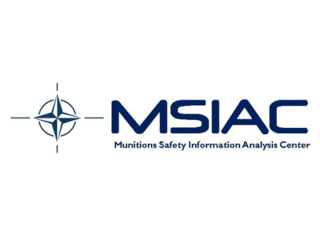 W
W W
WThe Ordnance Corps (ORD) is a combat support corps of the Irish Army, a branch of the Defence Forces, that has logistical and operational responsibility for military ordnance in Ireland. The logistical role of the Army Ordnance Corps is to provide technical support to the Defence Forces for the procurement, storage, distribution, inspection, maintenance, repair and disposal of all items of ordnance equipment. The operational role of the Ordnance Corps is to train personnel for and provide the state's bomb disposal capability.
 W
WThe United States Army Ordnance Corps, formerly the United States Army Ordnance Department, is a sustainment branch of the United States Army, headquartered at Fort Lee, Virginia. The broad mission of the Ordnance Corps is to supply Army combat units with weapons and ammunition, including at times their procurement and maintenance. Along with the Quartermaster Corps and Transportation Corps, it forms a critical component of the U.S. Army logistics system.
 W
WThe RADECS association is a non-profit professional organization that promotes basic and applied research in the field of radiation and its effects on materials, components and systems. The acronym RADECS stands for "RADiations Effects on Components and Systems".
 W
WRadiation-absorbent material, usually known as RAM, is a material which has been specially designed and shaped to absorb incident RF radiation, as effectively as possible, from as many incident directions as possible. The more effective the RAM, the lower the resulting level of reflected RF radiation. Many measurements in electromagnetic compatibility (EMC) and antenna radiation patterns require that spurious signals arising from the test setup, including reflections, are negligible to avoid the risk of causing measurement errors and ambiguities.
 W
WSignal Corps Radios were U.S. Army military communications components that comprised "sets". Under the Army Nomenclature System, the abbreviation SCR initially designated "Set, Complete Radio", but was later misinterpreted as "Signal Corps Radio."
 W
WSloped armour is armour that is neither in a vertical nor a horizontal position. Such "angled" armour is often mounted on tanks and other armoured fighting vehicles (AFVs), as well as naval vessels such as battleships and cruisers. Sloping an armour plate makes it harder to penetrate for antitank-weapons, such as armour-piercing shells and rockets, if they take a more or less horizontal path to their target, as is often the case. The better protection is caused by three main effects.
 W
WSponsons are projections extending from the sides of land vehicles, aircraft or watercraft to provide protection, stability, storage locations, mounting points for weapons or other devices, or equipment housing.
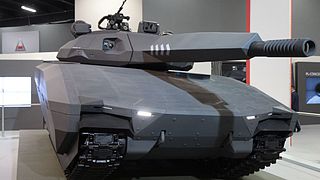 W
WGround vehicles using stealth technology have come to fruition at various times in history.
 W
WStealth technology, also termed low observable technology, is a sub-discipline of military tactics and passive and active electronic countermeasures, which covers a range of methods used to make personnel, aircraft, ships, submarines, missiles, satellites, and ground vehicles less visible to radar, infrared, sonar and other detection methods. It corresponds to military camouflage for these parts of the electromagnetic spectrum.
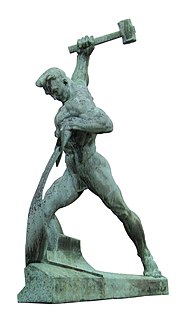 W
WSwords to ploughshares is a concept in which military weapons or technologies are converted for peaceful civilian applications.
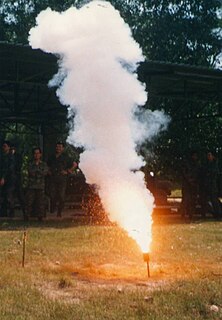 W
WA tripflare is a device used by military forces to secure an area and to guard against infiltration. It consists of tripwire around the area, linked to one or more flares. When the tripwire is triggered, as by someone unsuspectingly disturbing it, the flare is activated and begins burning. The light from the flare simultaneously warns that the perimeter may have been breached and also gives light for investigating. In defensive operations, tripflares are usually placed in predetermined kill zones with machine guns sighted on them.
 W
WUnited States Army Materiel Systems Analysis Activity (AMSAA) is an analysis organization of the United States Army. AMSAA's overall goal is to provide soldiers with the best U.S. Army materiel possible. AMSAA supports the U.S. Army by conducting systems and engineering analyses to support decisions on technology, materiel acquisitions, and the designing, developing and sustaining of U.S. Army weapon systems.
 W
WThe Army Research Laboratory (ARL) is the U.S. Army's corporate research laboratory. ARL is headquartered at the Adelphi Laboratory Center (ALC) in Adelphi, Maryland. Its largest single site is at Aberdeen Proving Ground, Maryland. Other major ARL locations include Research Triangle Park, North Carolina, White Sands Missile Range, New Mexico, Orlando, Florida, and NASA's Glenn Research Center, Ohio and Langley Research Center, Virginia. ARL also has regional sites in Los Angeles, Chicago, Austin, TX, and Boston.
 W
WThe United States Army Simulation and Training Technology Center (STTC) provides the United States Department of Defense and United States Department of Homeland Security with applied research to develop simulation technologies, build on current simulation knowledge, and understand system of systems environments where human, agent, and teams are involved.
 W
WURI Purposely Built Vehicles, officially URI Purposely Built Vehicles PTY LTD, is a South African automotive company who manufactures the Uri off-road vehicle. The company makes two models - URI Desert Runner and URI Mining Vehicle. The first is a simple, reliable and passable jeep in civil, military and police modifications.
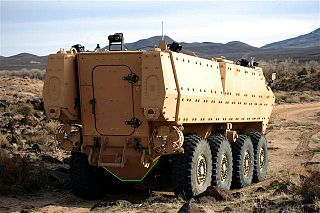 W
WThe V-hull is a type of vehicle armor design used on wheeled armored personnel carriers (APC), infantry mobility vehicles, infantry fighting vehicles (IFV) and MRAPs. The design originated in the 1970s with vehicles such as the iconic Casspir used extensively during the South African Border War, Leopard security vehicle used in the Rhodesian Bush War and South African armored vehicle company Land Systems OMC's and Buffel.
 W
WThe VT-158, also known as the Zahl tube, was a vacuum tube invented by American physicist Harold A. Zahl in the 1930s and used during World War II and the Korean War. It allowed the radar technology at the time to detect low-flying planes by generating enough power to produce ultrahigh frequency energy.
 W
WA wagon fort, wagon fortress, or corral, often referred to as circling the wagons, is a temporary fortification made of wagons arranged into a rectangle, circle, or other shape and possibly joined with each other to produce an improvised military camp. It is also known as a laager, especially in historical African contexts.